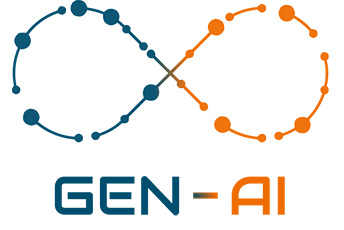Emotion and Intention Analysis in Customer-Financial Advisor Interactions Using the REST API /virtualbot/sentiment/sentiment_analisys
Market: Banks, insurance companies, fintechs.
Description:
The REST API /virtualbot/sentiment/sentiment_analisys, utilizing advanced OCR and a multimodal LLM, enables real-time analysis of customers’ emotions and intentions during their interactions with financial advisors. This analysis detects emotions such as frustration, confusion, or satisfaction, allowing financial advisors to adjust their approach to resolve concerns or improve the customer experience. Additionally, the intention analysis helps advisors accurately identify the customer’s specific needs, such as loan requests, financial advice, or investment opportunities, enabling more personalized and effective service.
The system can analyze both written text and verbal communications in customer interactions, giving advisors a clear view of the customer’s emotions and objectives, enhancing responsiveness and enabling greater personalization of financial services.
Specific Benefits:
- Improvement in Customer Service:
- Detection of Frustration or Confusion: Emotion analysis allows financial advisors to detect if a customer is frustrated or confused during the interaction. This enables advisors to adjust their approach and provide clearer explanations or customized solutions to quickly resolve issues.
- Service Personalization: By identifying the customer’s emotions and intentions, advisors can tailor their recommendations more personally, increasing customer satisfaction and strengthening long-term relationships.
- Increased Operational Efficiency:
- Prioritization of Critical Queries: The system allows advisors to prioritize interactions based on detected emotions such as frustration or urgency of the request. This ensures that customers requiring immediate attention receive a prompt and efficient response, optimizing workflow.
- Reduced Response Time: By identifying the customer’s intentions early in the interaction, advisors can provide quicker and more targeted responses, reducing the time needed to resolve queries and improving team productivity.
- Identification of Sales Opportunities and Service Improvement:
- Cross-Selling and Upselling Opportunities: Intention analysis enables advisors to identify cross-selling or upselling opportunities by detecting customers interested in additional financial products, such as insurance, loans, or investments. This improves the company’s commercial opportunities.
- Detection of Specific Needs: Advisors can identify the customer’s specific financial needs, such as loans, mortgages, or investments, enabling the offering of personalized solutions and increasing operational efficiency.
- Improvement in Client-Advisor Relationship:
- Empathetic and Tailored Responses: By detecting the customer’s emotional state, advisors can adjust their tone and approach, providing more empathetic responses that enhance the customer experience. This strengthens the relationship between the customer and the financial entity.
- Customer Loyalty: By personalizing recommendations and resolving issues more effectively, financial advisors can increase customer loyalty, leading to long-term relationships and greater overall satisfaction.
- Improvement in Risk Management and Opportunity Identification:
- Detection of Financial Risk Signals: The system can identify early signals of financial risk, such as credit issues or economic difficulties, allowing financial advisors to proactively address these problems.
- Leveraging Investment Opportunities: Intention analysis also helps identify customers interested in investment opportunities, facilitating the sale of additional financial products and improving business relationships.
- Increased Transparency and Trust:
- Improvement in Financial Communication: By detecting emotions such as confusion or nervousness, advisors can adjust their approach to ensure that the customer fully understands the terms and conditions of the financial products offered, fostering transparency and increasing trust.
- Proactive Interventions: Intention analysis enables advisors to anticipate customer needs and provide timely recommendations, enhancing satisfaction and trust in financial services.
Key System Integrations:
- Customer Relationship Management (CRM) Platforms:
- Recommended platforms: Salesforce, Zoho CRM, Microsoft Dynamics 365.
- How it works: Emotion and intention analysis integrates with CRM platforms to enrich customer profiles with data on their emotional behavior and financial needs, improving the personalization of services offered.
- Financial Analysis Tools:
- Recommended platforms: Bloomberg Terminal, Refinitiv, Tableau.
- How it works: The system can integrate with financial analysis tools to provide a clearer view of customer behavior, enhancing investment decisions and risk management.
- Customer Service Platforms:
- Recommended platforms: Zendesk, Freshdesk, Genesys.
- How it works: Emotion analysis can integrate with customer service platforms to provide real-time alerts about frustrated or confused customers, allowing advisors to act proactively and efficiently.
- Workflow Automation Platforms:
- Recommended platforms: Power Automate, Zapier, UiPath.
- How it works: Emotion and intention analysis can integrate with automation systems to prioritize critical queries, automatically assigning complex interactions to advisors with relevant expertise.
Conclusion:
The REST API /virtualbot/sentiment/sentiment_analisys is a key tool for the banking and financial services sector, enabling real-time analysis of customer emotions and intentions during interactions with financial advisors. By enhancing customer service, personalizing financial services, and increasing operational efficiency, this system allows advisors to offer more precise, proactive, and empathetic attention, fostering greater trust and improving customer loyalty.


